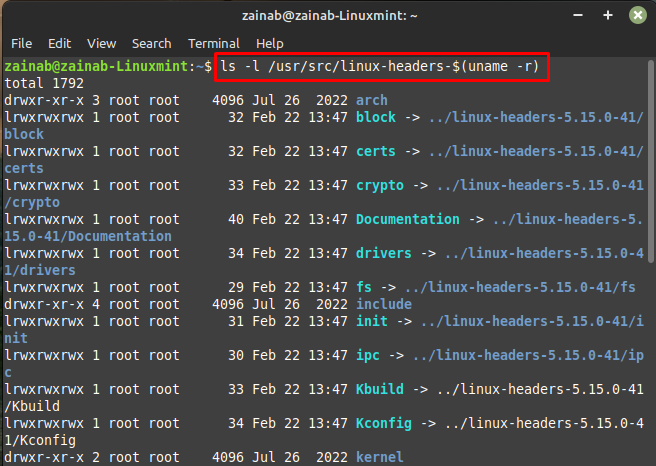Kernel headers are part of the kernel that provides support to the kernel in compiling drivers and loadable modules.
The kernel headers include the C headers file with functions and structures required for the compilation of drivers and modules. In this tutorial, we have demonstrated the installation procedure of the kernel headers on a Linux system.
How to Install Kernel Headers on Linux
It is important to install the Kernel headers package that matches the currently installed kernel package of the system. Before proceeding to the installation procedure, update your Linux system using the update command. First, check the installed kernel version of your system:
Next check the installed kernel header package on your system via the following command:
Then follow the following command to install the Linux Kernel header for your system:
In my case, it is already installed, but you can verify the installation of kernel headers on your system via the below command:
Conclusion
Kernel is a major component of the Linux system and it controls all the processes. The kernel headers are part of the kernel and provide support to the kernel. Most of the kernels already contain the kernel headers so in most cases you might not need to install the kernel headers. But in case it is not installed then the installation procedure of the Kernel Header is a simple and few-step process. Any Linux-level user can easily install it on their system. Follow the above guide for the installation procedure and you should install the headers that are compatible with your system.




